
Did you know that pepper plants are perennials with a lifespan of one and a half to three years? But it can take a while for peppers to get started.
If you’re a home gardener waiting for your first slice of red bell pepper, you can expect to wait at least four months after sowing the seeds. For spicier varieties like Carolina Reapers, you could be waiting five months or more from seed to harvest.
In some climates, you may not be able to grow peppers from seed because there aren’t enough days in the growing season.
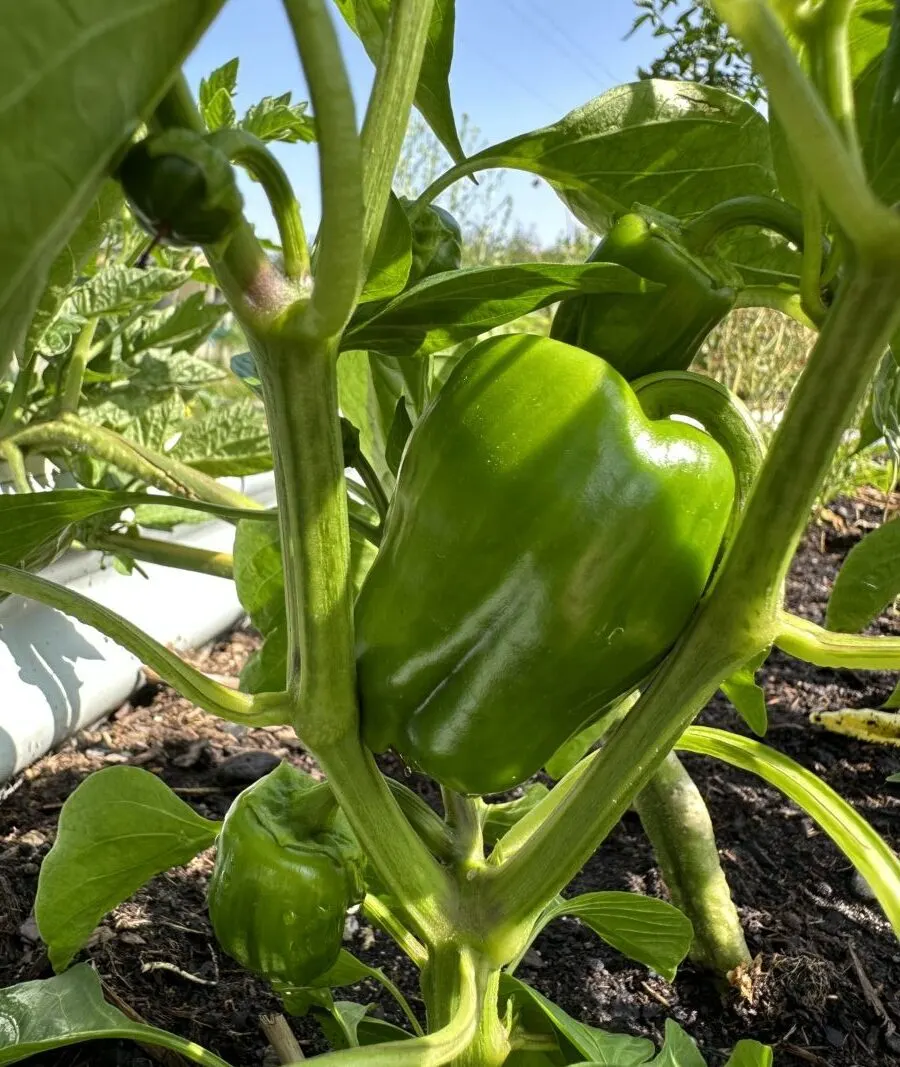
Here in my Zone 8 microclimate in France, the bell pepper seeds I start inside in mid-February produce green peppers by mid-August. In order to have red peppers, I must wait until September. That doesn’t leave much time before our cooler temperatures arrive in October.
If I want to get the most out of my pepper plants, I have to find alternative ways to extend the growing season.
Since I don’t own a greenhouse and our last frost date is early May, what do I do? Here are three great options I use to extend my pepper season and increase my harvests.
3 Ways to Overwinter Pepper Plants
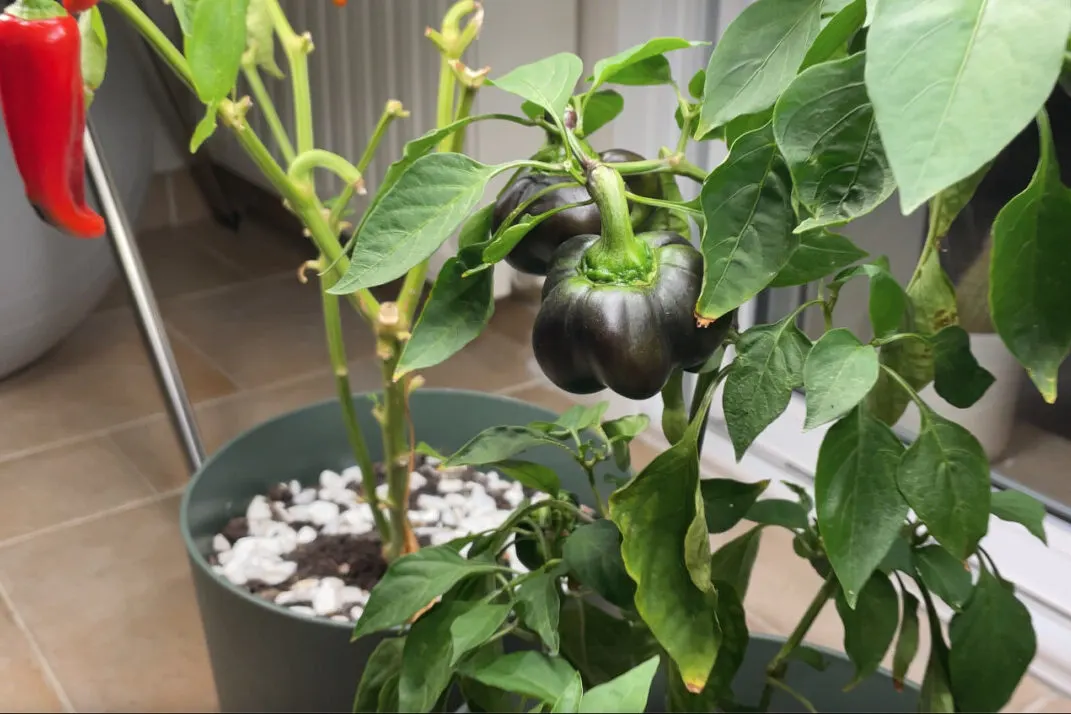
Depending on your reasons for overwintering, there are three possible options for overwintering pepper plants indoors.
Option One
With the first option, you simply move the pepper plant inside and provide the conditions it needs to continue to grow and produce throughout the winter. By keeping the plant fertilized, watered, and exposed to enough light and heat, you can grow peppers throughout winter.
That said, you will need to hand-pollinate once the plants are permanently indoors. You should also take measures to avoid indoor insect infestations by following the steps I outline below in The Transplanting Process.
Pepper plants need warm temperatures as well as light to flower and produce fruit. Most sweet pepper varieties will not flower if temperatures fall below 65 degrees F. If you want peppers throughout the winter, you’ll need to keep them someplace quite warm (70-80F), as well as bright.
However, since peppers (like most perennials) need a dormant period in order to maintain their health, I prefer to use Options 2 or 3.
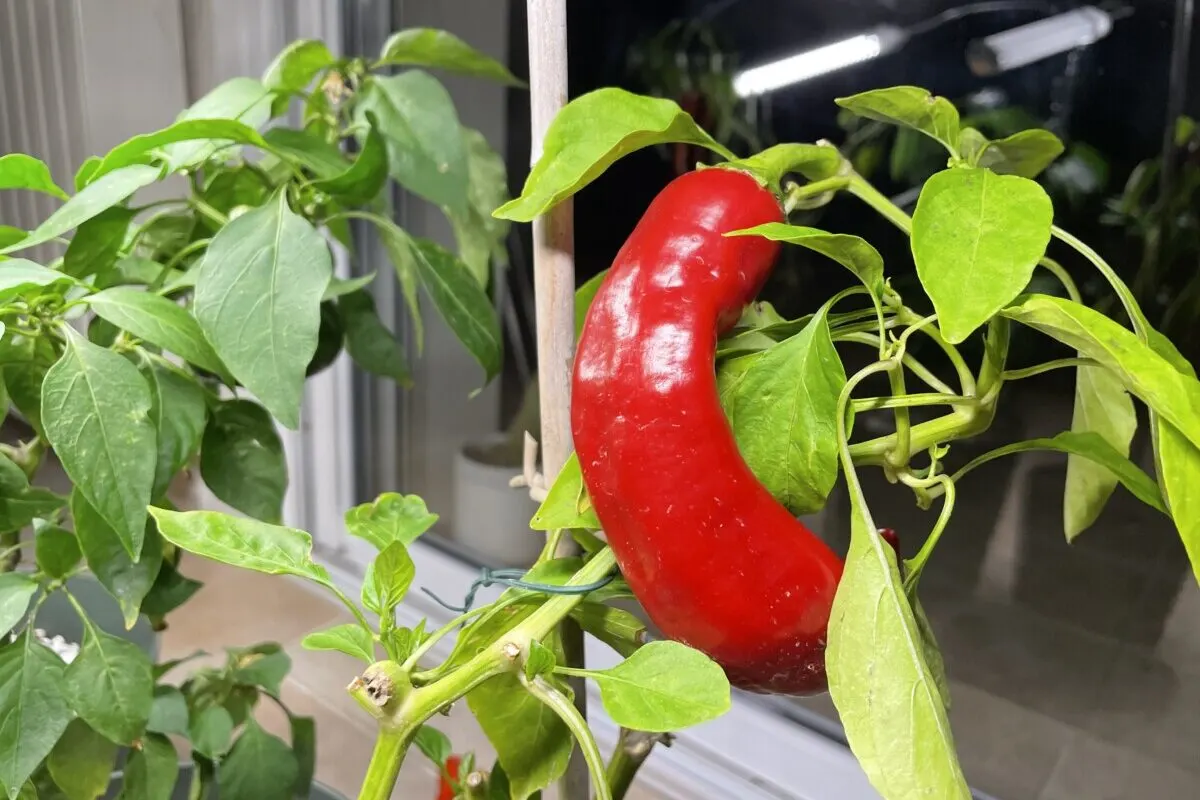
Option Two
The second option for overwintering pepper plants involves pruning back the pepper plant to force it into dormancy over the winter, and this is done before bringing the pepper plant indoors. I’ll explain how to do this in detail, but first, let me explain the third option: a hybrid approach.
Option Three
For the hybrid option, like Option One, you bring the pepper plant indoors and encourage another round of peppers to grow. However, unlike Option One, after harvesting, you prune the plant back to force it into a dormant period.
When I’m using the hybrid approach, I leave my pepper plants outside on warm autumn days and bring them in at night.
By doing this, pollinators take care of the pollination for me, and I save electricity that would otherwise be used for a grow light. That said, pepper plants like warm weather, so I only do this on days that the temperature will be above 65°F or 18°C.
Last year, I harvested Italian peppers and tomato peppers on the 30th of December! The plants were still strong and healthy at that time, but it was winter, and I would have needed to hand-pollinate for another round of peppers. I decided it was time for the plants to rest and used the pruning methods which I will discuss next, to force them into dormancy.
When Should You Start the Overwintering Process?
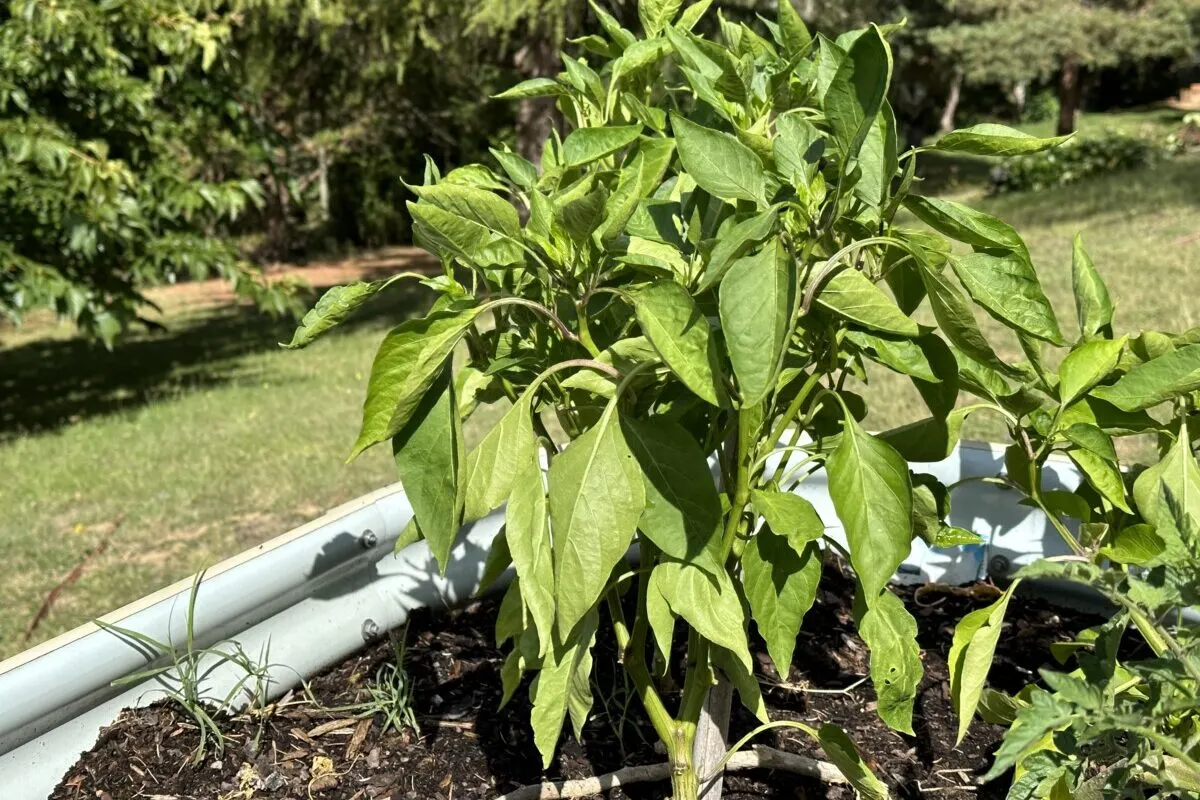
Because I have a relatively small vegetable garden, there comes a time in September when I need to free up space for my fall crops. Ideally, I’m able to wait until I harvest all the peppers currently growing.
At that time, I observe which plants have new flower buds or immature peppers. I apply the hybrid approach to these plants. If there are no signs of buds or peppers, I start the full overwintering process (Option Two) at this time.
If you have ample garden space and aren’t rushed to make way for your autumn crops, you can also let nature take its course.
Barring frost or freezing temperatures, allow the pepper plants to lose their leaves and go dormant as the weather cools and then start the overwintering process to move them indoors.
Let’s Get to Work – Prepare your plants for overwintering
In order to protect my pepper plants from shock, I divide the overwintering process into two stages: (1) the transplanting process and (2) the pruning process.
1. The Transplanting Process
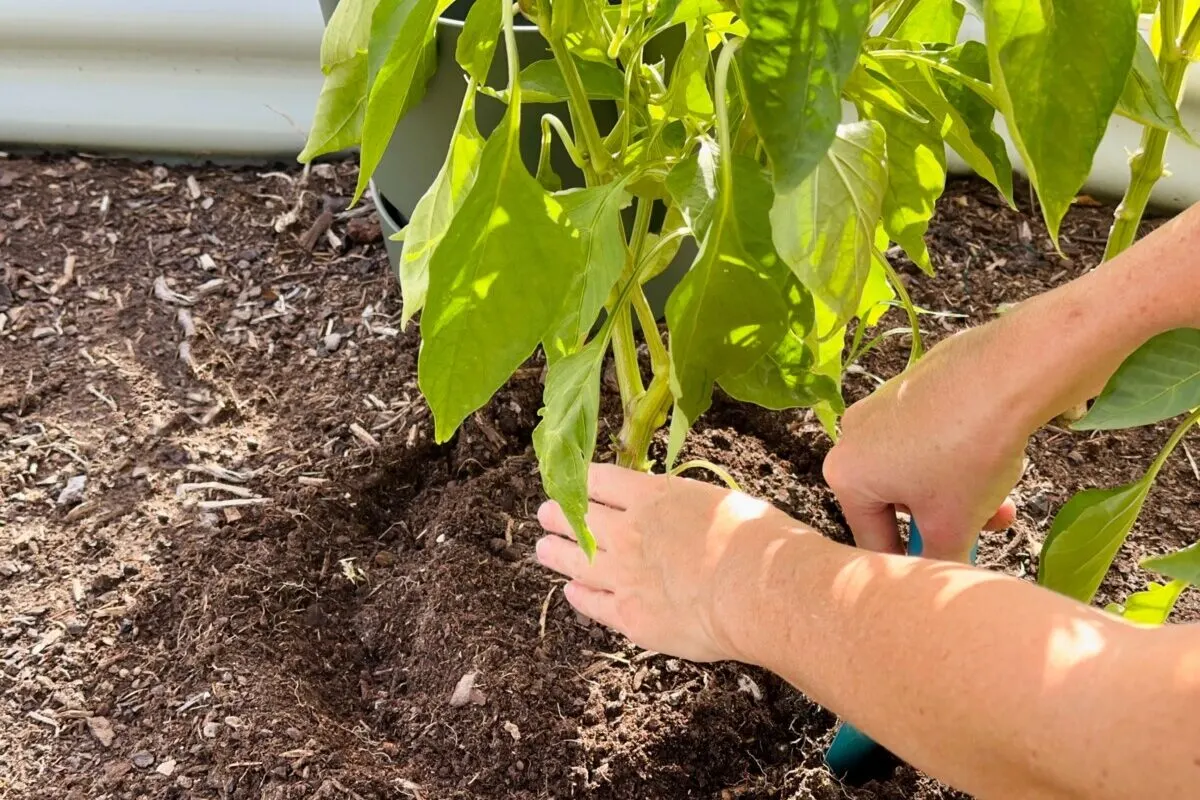
The transplanting process is when you move the pepper plant into the pot where it will spend the winter.
- First, if you will allow the plant to continue growing indoors without pruning it, you should check all the leaves for insects and eggs.
- Next, you will dig up the pepper plant from the garden and remove the soil from its roots. You want to remove as much soil as possible because it could harbor insects that you don’t want to bring indoors.
- After removing the soil, use a clean pair of shears or scissors to trim the roots down to fit the size of the pot you have chosen.
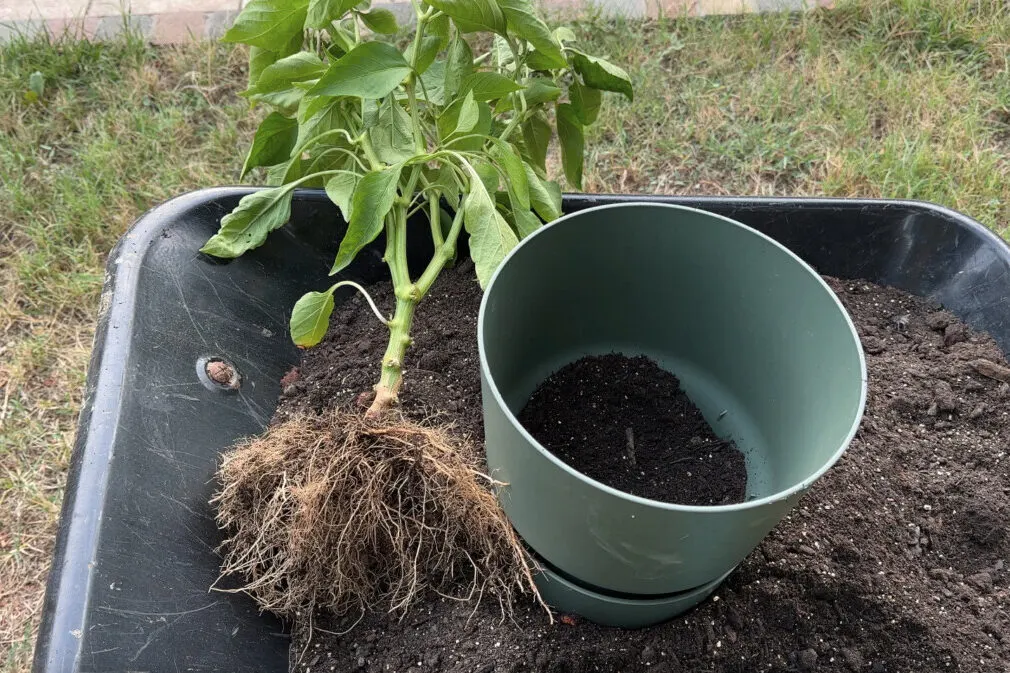
- It is recommended to dip the roots in a neem oil or soapy water solution to kill any insects you might have missed. I have never done this nor had issues with insects in the soil while overwintering, but we have few pests here compared to many parts of the world.
- Once your roots have been trimmed and cleaned, transplant the pepper plant to the new pot you have prepared. This pot should have fresh potting soil. Do not reuse potting soil or use garden soil for overwintering because it could be harboring insects, eggs, or diseases.
- Be sure to water the new transplant and keep it away from direct sunlight for a couple of days to help lessen transplant shock.
If you plan to keep harvesting over the winter or are using the hybrid approach, move the pepper plant indoors at this point.
Remember, pepper plants need at least six to eight hours of sunlight per day. You will probably need a grow light as the days shorten. The plant will also need warm temperatures.
Otherwise, if you’re ready to force them into winter dormancy, it’s pruning time.
2. The Pruning Process
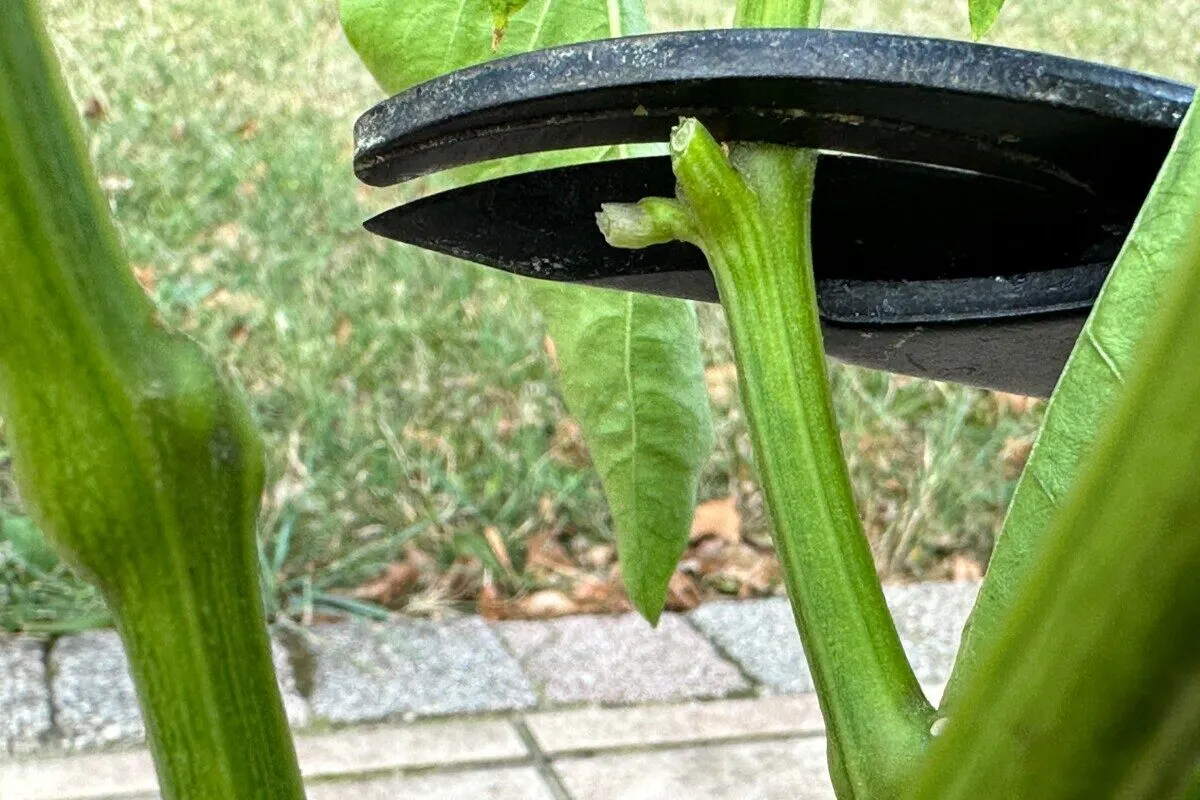
Pruning back pepper plants for overwintering will feel quite extreme the first time you do it.
- Using clean, sharp pruning shears, trim all the leaves and branches off down to a “V” or “Y” shape. In general, this means you will leave the primary stem of the plant and two main branches. You will make your cuts right above a node. I prune down each branch to one or two nodes, which is where next year’s growth will start.
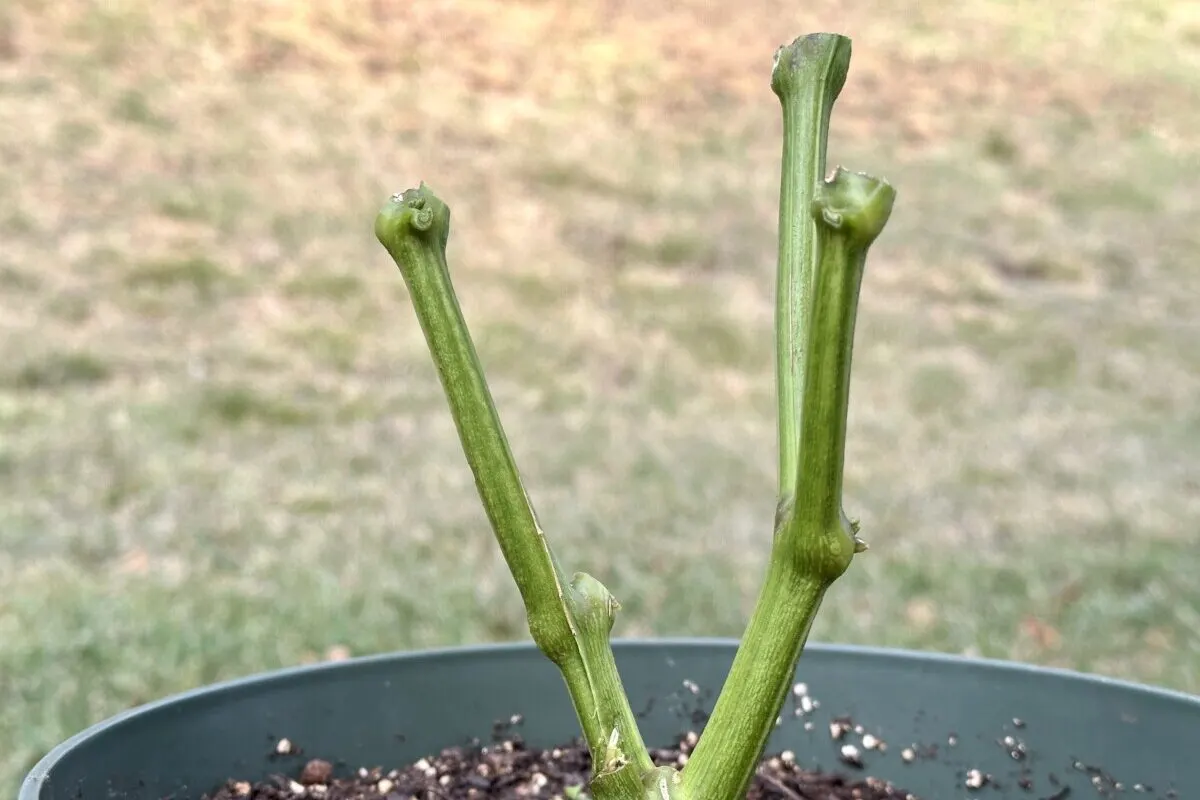
- After you have finished pruning, place the plant in a room with a cool temperature (55-65° F or 13-18° C) where they will receive indirect sunlight (2-4 hours each day). Under these conditions, the plant will go into a dormant period.
- During this time, limit watering to once every 7-14 days.
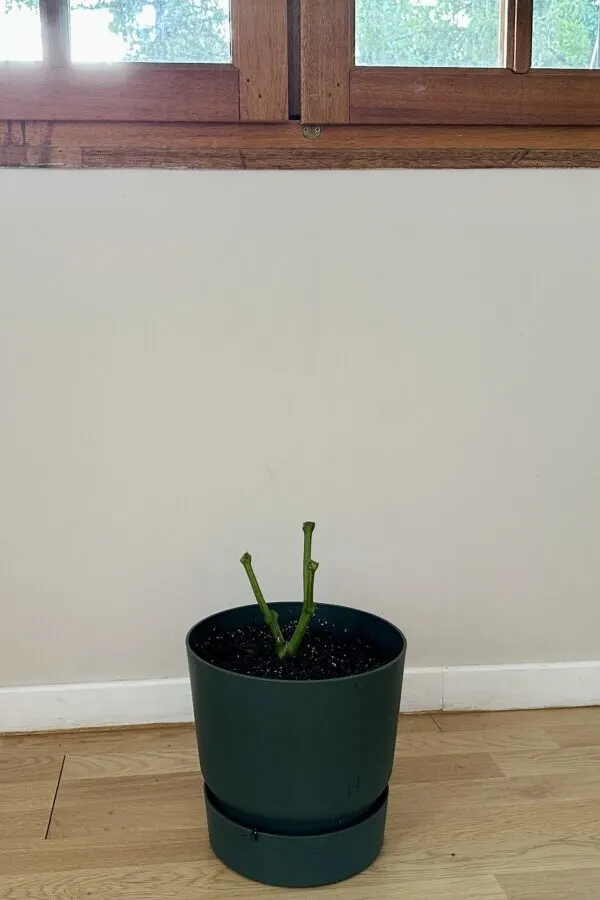
- If your plant begins putting on new leaves when it should be dormant, this means you need to adjust the temperature of the room and/or the lighting received by the plant. Pinch off the new growth.
- Depending on the plant, some overwintered pepper plants might die. To get the best results, only choose the strongest and healthiest plants from your summer garden for overwintering.
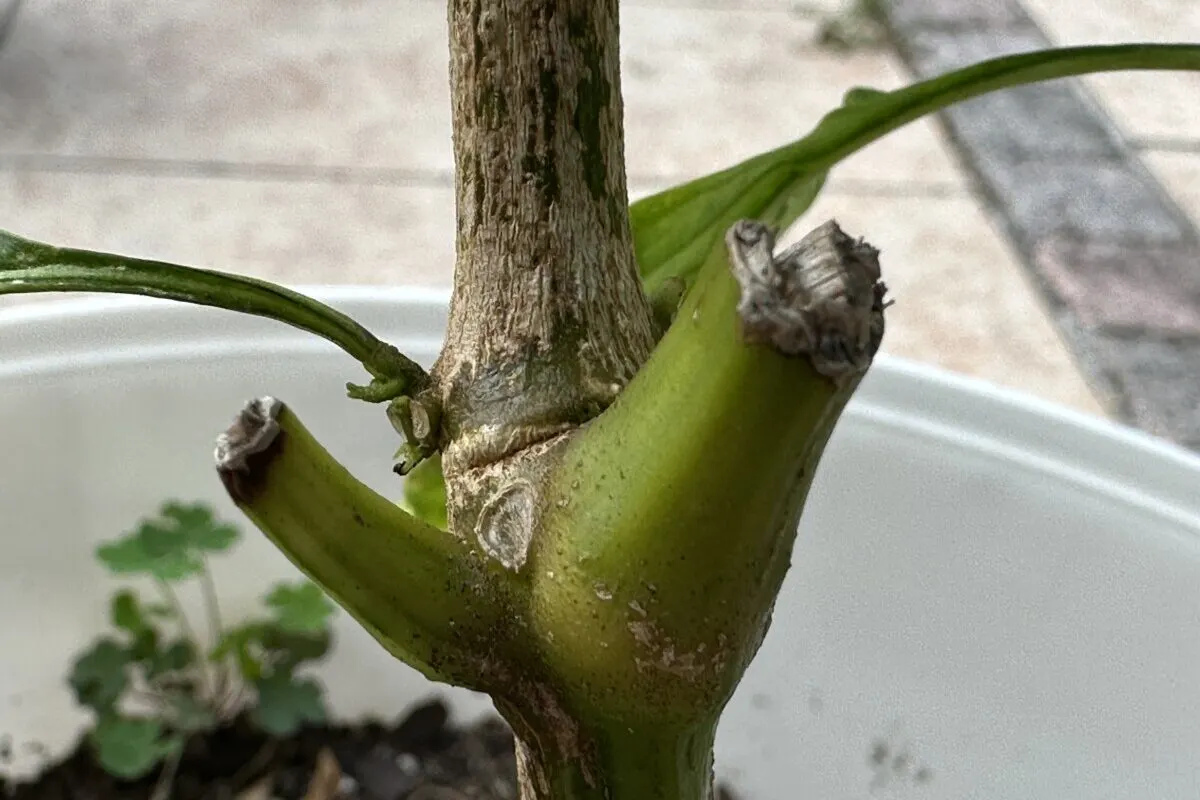
Time to Wake Up – Bring your pepper plants out of dormancy
In March, I move my pepper plants from their overwintering room downstairs into my warm, south-facing living room. Within 10-12 days, the first green leaves begin to form. Once they are no longer dormant, the pepper plants will need at least six hours of sunlight each day. A grow light can substitute for limited sunlight.
Once the days get warmer, the pepper plant must be hardened off before moving it back outside. You’ll want to repot it into a container big enough to allow new root growth, such as a grow bag, or transplant them back to the garden once the danger of frost has passed.
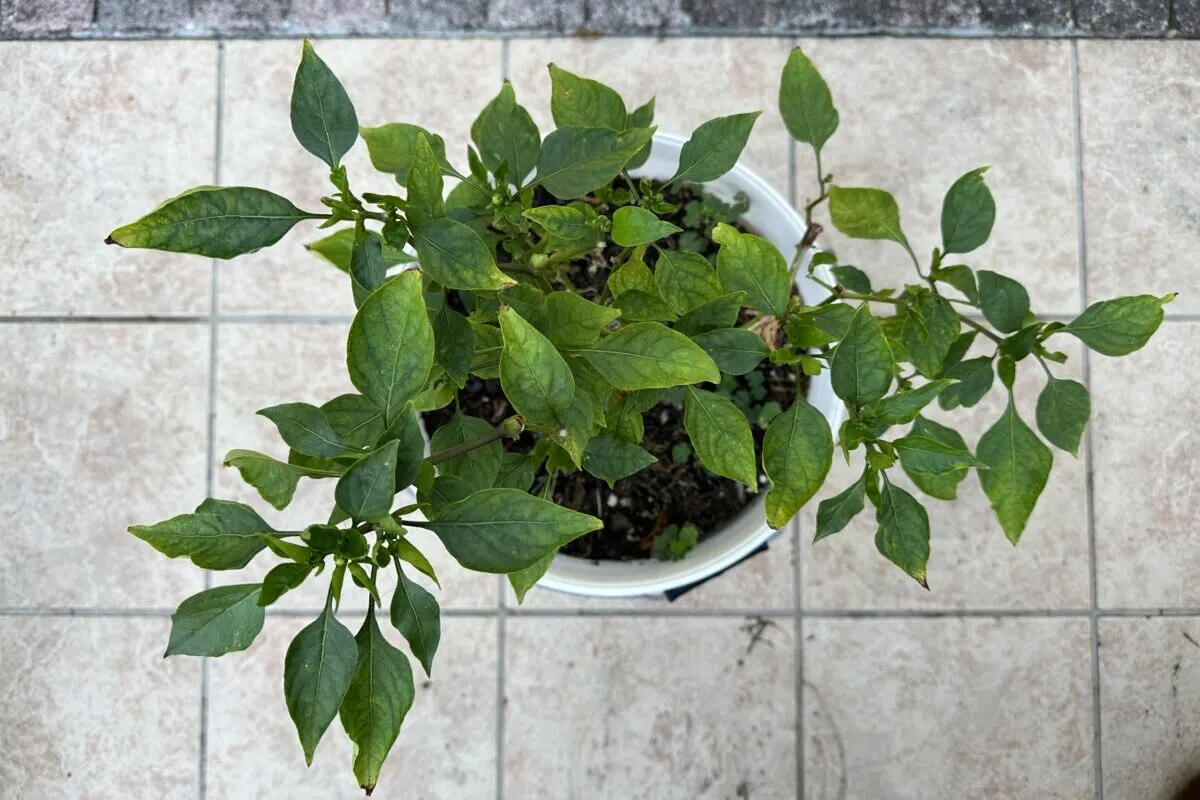
Overwintering pepper plants is easy if you follow the steps I’ve outlined above. Aside from the peppers I harvested until the end of December last year, I was also able to harvest peppers a month earlier than usual from my overwintered pepper plants.
As a bonus, those same plants have new buds on them now, which means I should end up with a second harvest before they go dormant this year.
Overwintering pepper plants is a great way to extend your pepper season and get the most out of your pepper plants.

Get the famous Rural Sprout newsletter delivered to your inbox.
Including Sunday musings from our editor, Tracey, as well as “What’s Up Wednesday” our roundup of what’s in season and new article updates and alerts.
